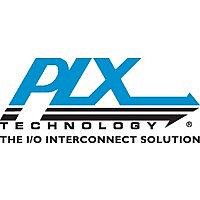PEX8311RDK PLX Technology, PEX8311RDK Datasheet - Page 2

PEX8311RDK
Manufacturer Part Number
PEX8311RDK
Description
Interface Modules & Development Tools PEX 8311 DEV KIT
Manufacturer
PLX Technology
Specifications of PEX8311RDK
Lead Free Status / RoHS Status
Lead free / RoHS Compliant
Available stocks
Company
Part Number
Manufacturer
Quantity
Price
Company:
Part Number:
PEX8311RDK
Manufacturer:
PLX
Quantity:
1 400
Direct Master or Direct Slave Operation
The PEX 8311 bridge provides master (Upstream traffic
generation) and slave (Downstream traffic acceptance)
capability. These transfers can occur simultaneously
with the DMA transfers and are given priority. For
master mode requests, the bridge services local bus
masters by generating Upstream traffic on the PCIe side.
There are two local bus address space maps to PCIe
(Direct Master mode): one to memory and one to I/O
with the bridge generating PCIe memory and I/O
transaction types. The bridge has independent large
depth Read and Write FIFOs. Read ahead and
programmable read pre-fetch counters enhance
performance. Register configuration is through the PCIe
port, Local Bus or through an optional EEPROM.
The PEX 8311 also supports direct slave requests where
the bridge services PCIe side Downstream traffic
initiators by mastering the Local Bus side. The bridge
has two general purpose address spaces and one
Expansion ROM space that could be used as a general
purpose direct slave space map to the Local Bus. Each
address space may be configured for 8-, 16-, or 32-bit
Local Bus data widths for flexible connectivity to Local
Bus devices. Independent Read and Write FIFOs of large
depth provide buffering. Performance is enhanced
through deferred writes, posted writes, read ahead, and
programmable read pre-fetch counters.
Hardware DMA Controls-EOT /Demand Mode
To optimize data transfers in many applications,
particularly communications, the PEX 8311 supports
hardware based control signals. When End of Transfer
(EOT#) is asserted, the bridge immediately terminates
the current transfer and indicates the number of bytes
transferred. Along with unlimited bursting capability,
EOT is useful in applications where the lengths of the
read packets are not known until the packets are read.
Additional hardware signaling control based DMA
transfers are available.
With Demand Mode each DMA channel has a pair of
hardware signals that are used to pause and resume the
current transfer. This allows a peripheral device such as
a line card with its own FIFO to control DMA transfers.
This mode can be used on many non-FIFO transfers as
well in a variety of end applications.
Advanced Performance Features
The PEX 8311 has a variety of added capabilities which
enhance throughput and flexibility for all transfer types:
DMA, Direct Master and Direct Slave. These include
zero wait state local bus bursts to 264 MB/s with
programmable burst lengths including unlimited
bursting, deep FIFO for maximum PCIe packet
generation, unaligned Local Bus transfers of any byte
length, on-the-fly Local Bus Endian conversion,
programmable Local Bus wait states, and Local Bus parity
checking. General purpose messaging for proprietary
message schemes include: eight 32-bit registers for
polled topologies and two 32-bit doorbell registers for
interrupt driven environments.
Fully Compliant Power Management
For applications that require power management, the
PEX 8311 device supports both link (L0, L0s, L1, L2/L3
Ready, and L3) and device (D0, D1, D2 and D3) power
management states, in compliance with the PCIe power
management specification. Full power management
event packets are generated and received and translated
to local bus signaling.
PLX I/O Accelerator Compatibility
The PEX 8311 is Register compatible with existing
PLX’s bus mastering Local Bus to PCI bridging
solutions (PLX PCI 9000 series). For many designs
migrating from PCI to PCIe, existing code utilizing these
I/O Accelerators can be used. As PCIe and PCI are
compatible, designs can quickly be extended to take
advantage of PCI Express’ bandwidth, system control,
and data integrity.
Internal Block Diagram
Figure 1 below shows an overview of the PEX 8311
Bridge. The device provides for full FIFO memory
buffers for each DMA channel and for Direct Master and
Direct Slave operation. A complete three layer PCIe
protocol interface with integrated SerDes provides
conversion from local bus data to/from PCI Express port
transfers. Modules for Hot Plug and power management
are included. Two serial EEPROM interfaces allow an
additional configuration option.
Applications
Suitable for Root Complex-centric as well as EndPoint
I/O applications, the PEX 8311 can be configured for a
wide variety of form factors and applications.
PCI Express
Hot Plug
PCI Express
Interface
Figure 1. High-Speed Data Transfers
Serial EEPROM
Configuration
EEPROM
Interface
PCI Express
Serial
Registers
Bus
FIFOs
Configuration
Local Bus
Registers
Serial EEPROM
EEPROM
Interface
Serial
Local Bus
Interface
Generic
Management
Power







